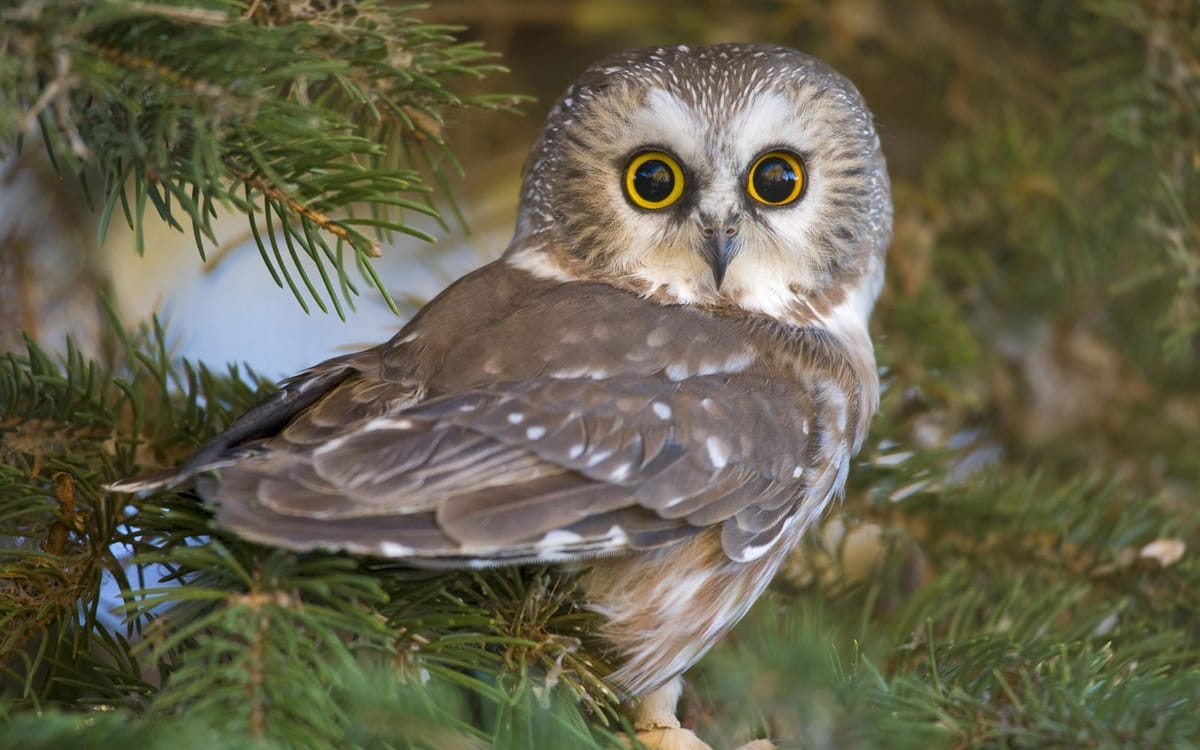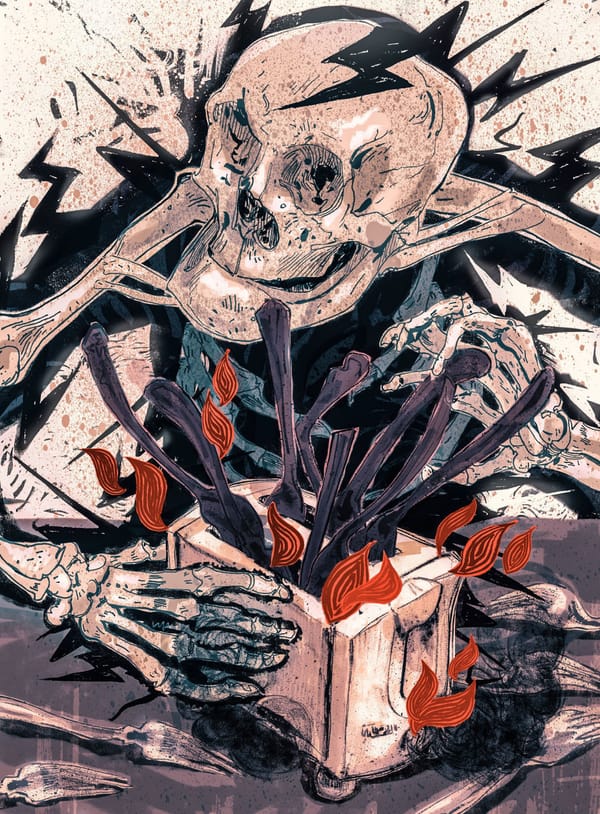exorcist owls | 2015-12-09

this week’s topic: exorcist owls
we humans are wonderfully created predators with highly maneuverable heads and with eyes on the front of our faces that we can move in lots of directions in tandem but are also rounded so that we can see a great deal in our periphery — handy for tracking stuff and for keeping us safe.
not so similarly, owls, another wonderfully created predator, have beautiful but basically flat eyes on the front of their faces — their eyes are kind of like telescopes, with a flat lens that helps them focus at greater distances. internally, their eyes are well built for picking up lots of light from small light sources, so they can also see really well at night.
so, how does an owl make up for the fact that it can’t see very well to the sides? well… it can spin it’s head around to a ridiculous degree — some species can turn their heads up to 270 degrees horizontally and 180 degrees vertically! (no, no species can actually turn their head all the way around). this is totally awesome and, given the rate of speed and the otherwise keenness of their eyes, more than makes up for the lack of curvature in the structure of their eyes.
the thing is, if a human being were to spin her head around at even half the speed an owl does, not only would she break her neck, she would also severely damage the arteries headed to her brain, leading to a certain stroke. why don’t we see piles of dead owls on the forest floors (presumably surrounded by a teary eyed bear and their pig, rabbit, donkey, tiger, and kangaroo friends)?
turns out, firstly, owls have (as you might expect) extremely flexible tendons and vertebrae in their necks, allowing for the extreme motion and preventing broken necks. further, they have a lot more bones/tendons/etc. in their next than we do. humans, by comparison, have extremely tightly designed necks which protect our precious tracheae, esophagi, arteries, etc. in fact, as an aside, our necks are best protected when we crane our necks upward, since the tendons and muscles all activate and form a sort of armour to keep external forces at bay — looking down, all the tendons and muscles relax, leaving our internal tubes in a much more precarious position.
secondly, unlike human vertebrae, through which arteries travel by way of holes just big enough for them to fit, owls have very large holes in their vertebrae through which their arteries run, allowing for quite a bit of leeway and flexibility. further, their arteries have a small amount of slack at the base of the neck and the base of the skull to allow for a small amount of stretch — again, not at all like human necks. extra bonus: more holes in bones = lighter body = easier flight!
finally, shortly after they get past the neck and into the head, an owl’s arteries are somewhat expanded. this creates a little pocket that can store a bit of blood so that, in the unlikely event of a water landing… i mean, arterial constriction due to head twisting… there’s some spare blood for the brain work with.
so, owls cannot spin their heads all the way around but they are fabulously designed for living through spinning their heads most of the way around.
references:
How Owls Rotate Their Heads
How Owls Twist Their Heads
How Far Can An Owl Turn Its Head
bonus: the british say ‘owl’ like a bunch of champs (ref: hermione granger)



